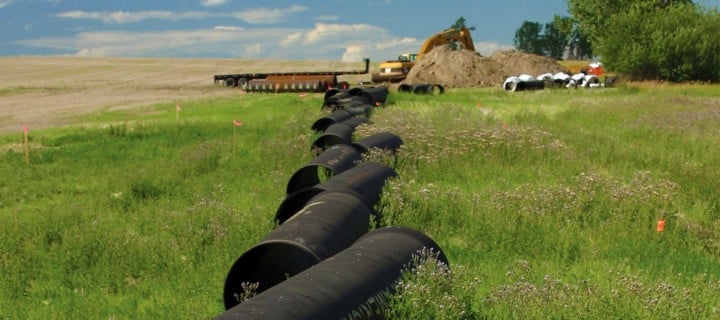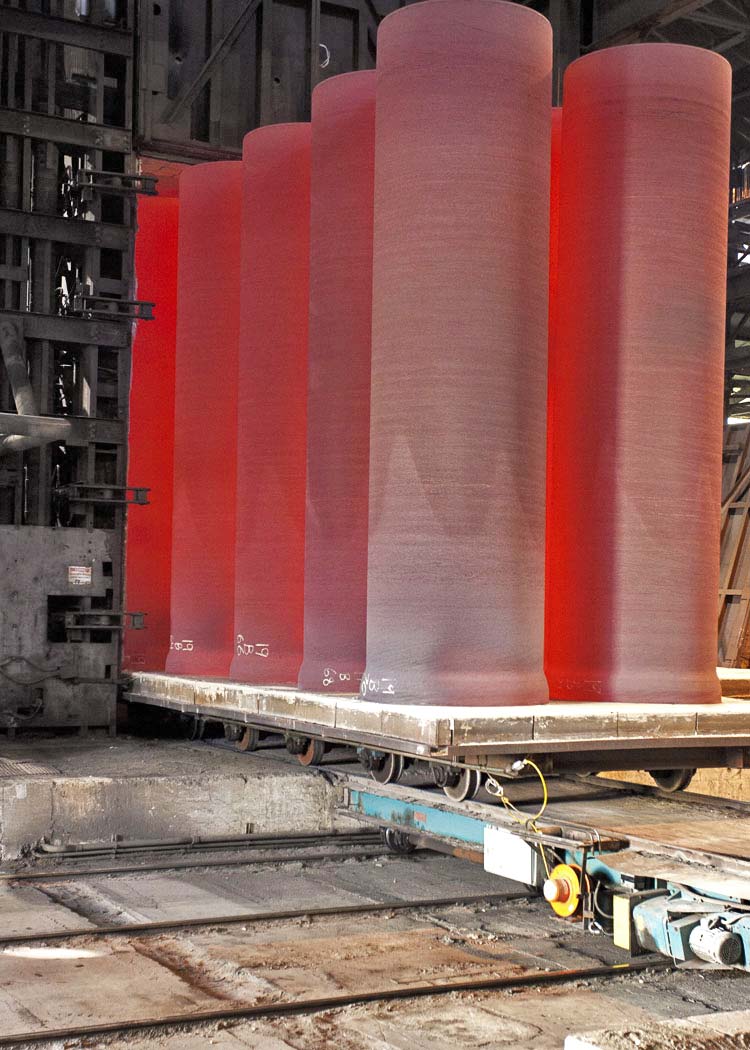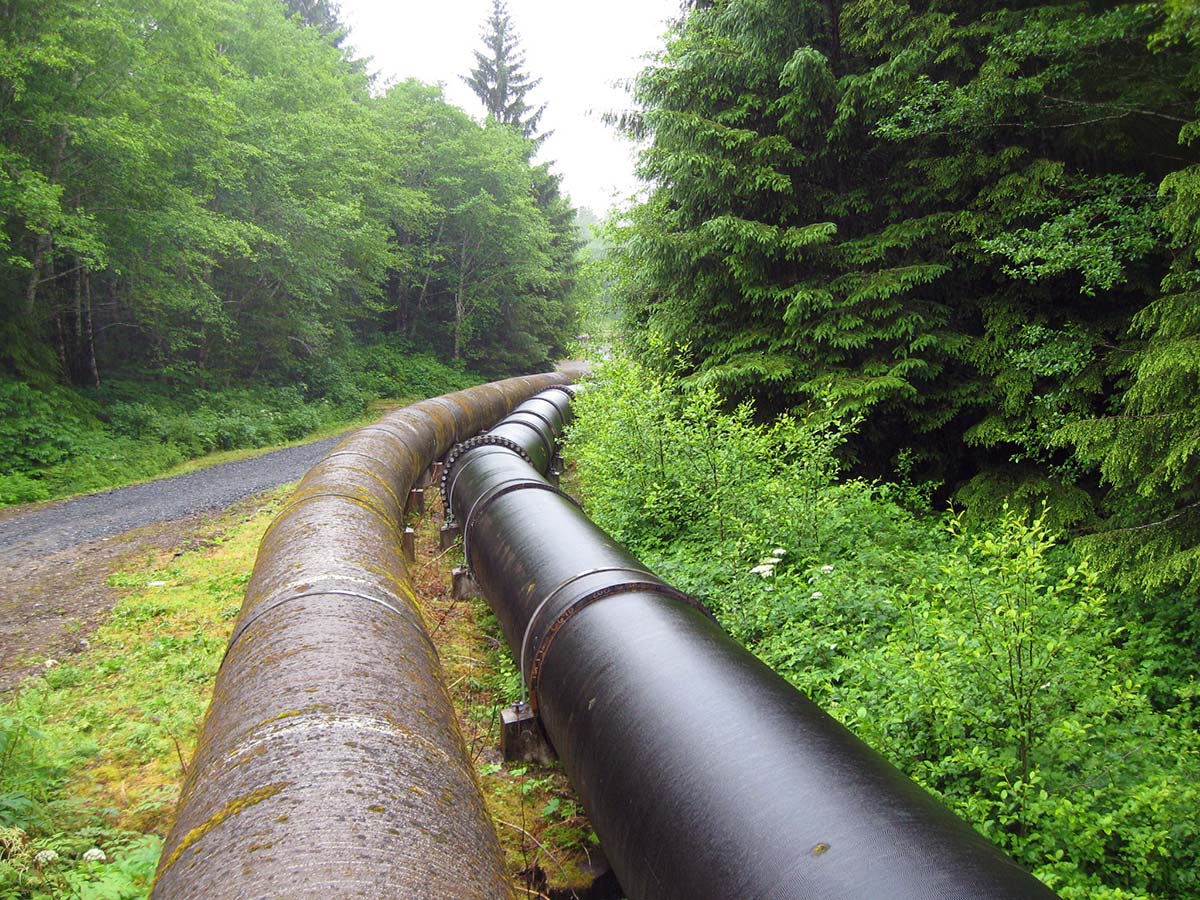Benefits of Ductile Iron Pipe
- Home
- Team EJP Blog
- Benefits of Ductile Iron Pipe
- Oct 1, 2014 9:30:00 AM
- Everett J. Prescott

For over a century, American engineers have been using iron pipe to create the nation’s water system infrastructure. Today’s modern iron pipe is fabricated to last more than 100 years. There are a number of ironclad facts about this pipe that it makes it the preferred industry standard for water systems.
Better Manufacturing Process for Unmatched Strength
 Although ductile iron has all of the attractive qualities of cast iron like corrosion resistance and machinability, its additional toughness and strength add to more dependability. Ductile iron has additional metallurgical processes and significant casting refinements. Its manufacturing process specifically changes the graphite content of the iron. Adding inoculants creates spheroidal forms instead of the flake forms found in cast iron. The end result is a metal that is lighter and stronger than cast iron. Bursting, ring bending, beam and tensile testing have proven that ductile iron in its spheroidal form is twice the strength of cast iron.
Although ductile iron has all of the attractive qualities of cast iron like corrosion resistance and machinability, its additional toughness and strength add to more dependability. Ductile iron has additional metallurgical processes and significant casting refinements. Its manufacturing process specifically changes the graphite content of the iron. Adding inoculants creates spheroidal forms instead of the flake forms found in cast iron. The end result is a metal that is lighter and stronger than cast iron. Bursting, ring bending, beam and tensile testing have proven that ductile iron in its spheroidal form is twice the strength of cast iron.
Ductile Iron pipe Defines Durability
Its high degree of durability is due to its strength and impact. Specifically, this pipe has minimum strength requirements of 10 percent elongation, 42,000 psi yield strength and 60,000 psi tensile strength. It’s made to resist damage during shipping. Once installed ductile pipe is engineered to withstand demanding operation conditions, such as river crossings, unstable soils, high water table traffic, deep trenches and frozen ground.
Highly Corrosion Resistance of Ductile Iron Pipe
 Field and laboratory tests have proven that ductile iron pipe is equal to or greater to that of cast iron when it comes to corrosion resistance. In addition, polyethylene encasement can be used to enhance corrosion resistance. These encasements prevent direct contact between corrosive soils and the pipe. There is no formation of accelerated corrosion cells at coating gaps either. The method of installing polyethylene casements entails wrapping the pipe with sheets or tubes prior to installation. It’s economical, effective and easy to install.
Field and laboratory tests have proven that ductile iron pipe is equal to or greater to that of cast iron when it comes to corrosion resistance. In addition, polyethylene encasement can be used to enhance corrosion resistance. These encasements prevent direct contact between corrosive soils and the pipe. There is no formation of accelerated corrosion cells at coating gaps either. The method of installing polyethylene casements entails wrapping the pipe with sheets or tubes prior to installation. It’s economical, effective and easy to install.
Environmental Benefits of Ductile Iron Pipes
The environmental benefits of duct iron pipes are pretty straight forward:
- Ductile iron pipe is fabricated from recycled steel and ferric scrap metal.
- Ductile iron pipe is made of up to 95 percent recycled content and is 100 percent recyclable material itself.
- Years of usage have demonstrated no adverse health risks to the population.
- Using ductile iron pipe saves up to 38 percent in energy consumption.
- These energy savings result in less carbon dioxide emissions.
- Ductile iron pipe does not leach harmful chemicals into the public drinking water.
America’s Water Infrastructure Challenge
The nation’s massive water system infrastructure is passing its century mark and is in critical need. Not only millions of miles of pipe need replacing, additional pipe must be added to meet the needs of a growing population. According to the American Water Works Association, this venture will tally up to more than a $1 trillion expense. Without a doubt, ductile iron pipe is a smart choice for this massive endeavor. With its superior strength, it can handle the stress. While the initial costs of ductile iron pipe many be higher than other materials, the long-term savings are significant. A ductile iron pipe system can last up to 100 years and sometimes to 150 years. It will also reduce the likelihood of costly mishaps and disasters.
If you need more detailed information on ductile iron pipe be sure to check out our free Ductile Iron Pipe Guide below.
Get The Ductile Iron Pipe Guide

The Ductile Iron Pipe Introductory Guide will help you understand all of the details and technical data for ductile iron pipe. Get the guide today, it’s FREE! Here are just a few of the topics covered;
- Cement Lined Pipe
- Pressure Classes
- Nominal Thickness
- Weights for Pipeline Design
- Special Thickness Classes
- Ductile Iron/Gray Iron Weights








